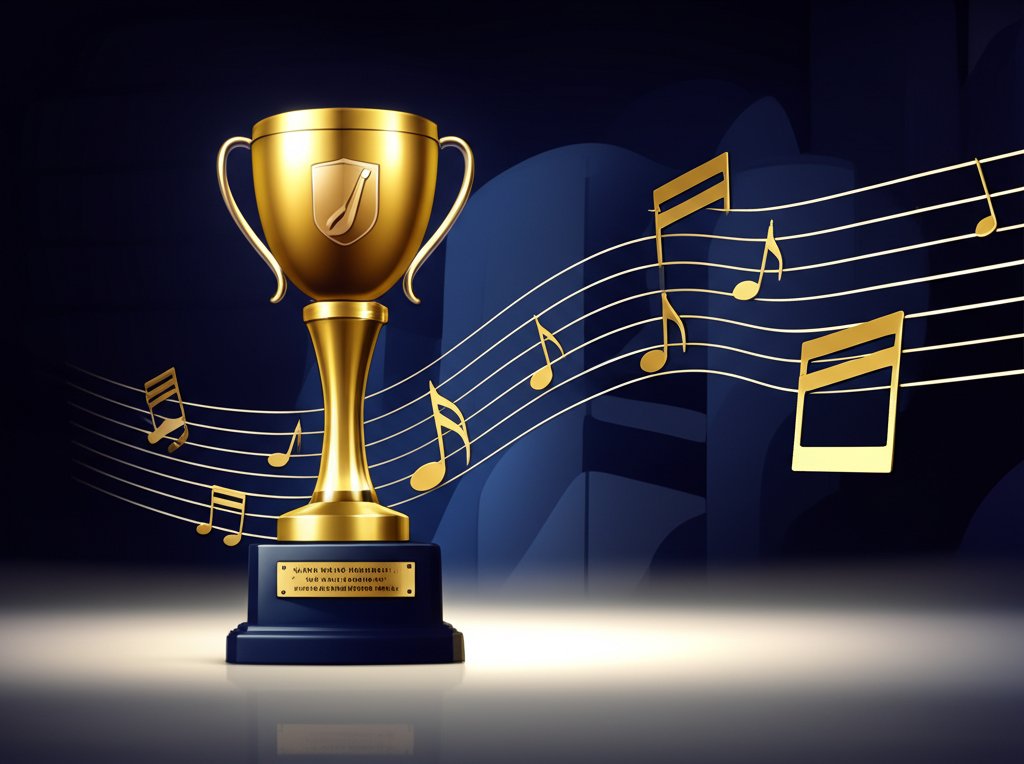It’s one of the most electric moments in all of music: a packed concert hall, a global audience holding its breath, and a young pianist on the verge of a life-changing announcement. For over 60 years, the winners of Van Cliburn Piano Competition have been catapulted from rising talents to international stars overnight. But what does it really take to conquer this Mount Everest of the piano world, and who are the legendary artists who have reached its summit?
This isn’t just about a gold medal. It’s about joining a lineage of pianistic royalty, a story of staggering discipline, profound artistry, and the kind of high-stakes drama you’d expect from a championship sports event. From the Cold War triumph of its namesake to the viral superstardom of its most recent champions, the Cliburn is more than a contest—it’s a cultural phenomenon.
At a Glance: The Cliburn Decoded
Before we dive into the incredible stories of the laureates, here’s a quick overview of what makes the Van Cliburn International Piano Competition so significant.
- What It Is: A prestigious, invitation-only piano competition held every four years in Fort Worth, Texas.
- The Prize: Winners receive a massive cash award ($100,000 for Gold), but more importantly, three years of comprehensive career management, international concert tours, and recording opportunities.
- The Stakes: It’s a career-making event. Winning the Cliburn can instantly place a pianist on the world’s most revered stages, from Carnegie Hall to the Vienna Musikverein.
- The Legacy: The competition is named for American pianist Van Cliburn, whose shocking 1958 victory at the Tchaikovsky Competition in Moscow became a legendary moment of cultural diplomacy.
- The Music: Competitors navigate a grueling series of rounds, performing everything from solo recitals and chamber music to two full concertos with the Fort Worth Symphony Orchestra in the final.
The Making of a Legend: What Is the Van Cliburn Competition?
To understand the winners, you first have to understand the stage. The Cliburn was born from a moment of pure American pride. In 1958, a tall, lanky Texan named Van Cliburn traveled to Moscow at the height of the Cold War and won the first-ever International Tchaikovsky Competition. He returned home a national hero, greeted with a ticker-tape parade in New York City—the only one ever for a classical musician.
A group of passionate music lovers and teachers in Fort Worth, Texas, decided to honor his achievement by creating a world-class competition on American soil. Launched in 1962, their goal was simple but ambitious: to discover the next generation of great pianists and provide them with the tools for a major career.
Hosted by the Van Cliburn Foundation, the competition has grown from a respected national event into a global institution. Since 2001, it has been held in the stunning Bass Performance Hall, and its pioneering webcasts, which began in 2009, now draw millions of viewers from over 170 countries, turning the quadrennial event into a worldwide celebration of the piano.
The Gauntlet: How a Pianist Becomes a Cliburn Champion

Winning the Cliburn is an act of supreme artistic and physical endurance. Over two and a half weeks, 30 of the world’s finest young pianists (ages 18-30) are tested on every facet of their musicianship.
The journey is a marathon, not a sprint, divided into four demanding stages:
- Preliminary Round: Each of the 30 competitors performs a 40-minute solo recital. The pressure is immense, as nearly half of them will be sent home.
- Quarterfinal Round: The 18 remaining pianists perform another 40-minute solo recital with a completely different program. This round tests their repertoire depth and consistency.
- Semifinal Round: This is where the competition truly broadens. The 12 semifinalists must perform a 60-minute solo recital and a Mozart concerto with the Fort Worth Symphony Orchestra. It’s a test of soloistic brilliance and collaborative sensitivity.
- Final Round: The six finalists who survive the cut face the ultimate test. Each must perform a piano quintet with a renowned string quartet and then a major concerto with the orchestra. It’s a final, exhaustive showcase of their power, poetry, and command of the stage.
A jury of celebrated performers and pedagogues judges every note. They’re not just looking for technical perfection; they’re searching for a unique artistic voice—a storyteller at the keyboard who can connect with audiences on a deeply emotional level.
A Pantheon of Pianists: A Chronicle of Cliburn Gold Medalists
The list of Cliburn laureates reads like a who’s who of the piano world from the last half-century. While every finalist is an exceptional artist, the Gold Medalists enter a particularly exclusive club. Here’s a look at the complete list of first-prize winners, who have shaped the history of the competition.
The Early Establishment (1962–1977)
The first competitions established the Cliburn’s international prestige, drawing incredible talent from both sides of the Iron Curtain.
- 1962 (1st): Ralph Votapek (United States)
- 1966 (2nd): Radu Lupu (Romania)
- 1969 (3rd): Cristina Ortiz (Brazil)
- 1973 (4th): Vladimir Viardo (Soviet Union)
- 1977 (5th): Steven De Groote (South Africa)
The legendary Radu Lupu’s win in 1966 was a defining moment, cementing the competition’s reputation for identifying profound, world-class musical minds. His poetic and deeply introspective playing set a standard for artistry that endures to this day.
The Era of Power and Poetry (1981–1997)
This period saw the rise of virtuosic powerhouses and intensely individualistic artists who captured the hearts of audiences and juries alike.
- 1981 (6th): Andre-Michel Schub (United States)
- 1985 (7th): José Feghali (Brazil)
- 1989 (8th): Alexei Sultanov (Soviet Union)
- 1993 (9th): Simone Pedroni (Italy)
- 1997 (10th): Jon Nakamatsu (United States)
The 1989 competition is remembered for the explosive, heart-on-his-sleeve playing of Alexei Sultanov, a fiery 19-year-old who became an audience favorite. A decade later, Jon Nakamatsu made headlines with his underdog story—a high school German teacher who hadn’t attended a major conservatory but won the Gold through sheer talent and dedication. The full list of [placeholder_link slug=”van-cliburn-competition-winners” text=”Van Cliburn Competition winners”] reveals a fascinating history of piano performance across different eras.
The New Millennium: Ties and Triumphs (2001–2009)
The 21st century brought historic and unprecedented results, reflecting the increasingly globalized and competitive nature of the piano world.
- 2001 (11th): A tie between Olga Kern (Russia) and Stanislav Ioudenitch (Uzbekistan).
- 2005 (12th): Alexander Kobrin (Russia)
- 2009 (13th): Another historic tie, this time between Haochen Zhang (China) and Nobuyuki Tsujii (Japan).
The 2009 competition was particularly memorable. The victory of Nobuyuki Tsujii, who has been blind since birth, was an inspirational story that resonated far beyond the classical music community. His deeply moving performances became a global sensation.
The Modern Titans (2013–Present)
Recent competitions have been dominated by pianists of staggering technical command and mature artistry, whose performances have gone viral thanks to the Cliburn’s live webcasts.
- 2013 (14th): Vadym Kholodenko (Ukraine)
- 2017 (15th): Yekwon Sunwoo (South Korea)
- 2022 (16th): Yunchan Lim (South Korea)
- 2025 (17th): Aristo Sham (Hong Kong, China)
In 2022, 18-year-old Yunchan Lim delivered one of the most talked-about performances in competition history with his transcendent rendition of Rachmaninoff’s Piano Concerto No. 3. The video of his performance has been viewed millions of times, bringing a new level of rock-star energy to the competition and turning him into an overnight global phenomenon.
More Than Just Gold: Understanding the Full Prize Package
While the Gold Medal gets the spotlight, the Cliburn is designed to launch the careers of multiple artists. The Silver and Bronze medalists are also world-class talents who receive substantial prizes and concert engagements.
| Prize | Cash Award (as of 2025) | Key Benefits |
|---|---|---|
| Gold Medal | $100,000 | 3 years of individualized career management, U.S. and international concert tours, studio and live recordings. |
| Silver Medal | $50,000 | 3 years of career management and extensive concert tours. |
| Bronze Medal | $25,000 | 3 years of career management and concert tours. |
| Beyond the top three medals, the Cliburn recognizes excellence with a range of other awards: |
- Finalist Awards: The three non-medalist finalists each receive $10,000.
- Best Performance of a New Work: A $5,000 prize for the best interpretation of the commissioned piece written specifically for the competition.
- Audience Award: Voted on by thousands of online and in-person viewers, this award comes with a $2,500 prize.
- Best Performance of a Mozart Concerto: A $5,000 prize awarded during the semifinal round.
The career management package is the true game-changer. It’s one thing to win a competition; it’s another to build a sustainable, long-term career. The Cliburn’s team works with the winners to book concerts, negotiate contracts, secure recordings, and handle publicity—the crucial infrastructure that turns a competition victory into a lasting legacy.
The Latest Champions: A New Generation Takes the Stage

The 17th Van Cliburn International Piano Competition, held in June 2025, continued the tradition of identifying extraordinary artists poised for major careers.
The jury awarded the coveted Gold Medal to Aristo Sham, a 29-year-old from Hong Kong, China. His performances were noted for their intellectual depth, virtuosic command, and profound emotional resonance. Sham also captured the Audience Award, a testament to his powerful connection with viewers worldwide.
Here are the complete 2025 results:
- Gold Medalist: Aristo Sham (Hong Kong, China), 29
- Silver Medalist: Vitaly Starikov (Israel/Russia), 30
- Bronze Medalist: Evren Ozel (United States), 26
As we [placeholder_link slug=”cliburn-competition-winners” text=”Meet the Cliburn champions”] from this latest edition, it’s clear the legacy of artistic excellence is in very capable hands. Their upcoming concert tours will be a chance for audiences across the globe to experience the next wave of piano greatness.
Beyond the Spotlight: The “Cliburn Curse” and Other Realities
A common question that follows major competition winners is whether they can live up to the immense expectations. Is there a “Cliburn Curse,” where the pressure to maintain a top-tier career becomes overwhelming?
The reality is more nuanced. Winning the Cliburn provides an unparalleled opportunity, but it doesn’t guarantee a specific career trajectory. Some winners, like Radu Lupu or Olga Kern, become mainstays on the world’s most famous stages for decades. Others, like the brilliant Alexei Sultanov, had careers tragically cut short. Still others choose a different path, focusing on teaching, recording, or a more curated performance schedule.
Furthermore, success isn’t limited to the Gold Medalist. Silver Medalist Beatrice Rana (2013) has become one of the most sought-after pianists of her generation, signing an exclusive recording contract with Warner Classics. The list of successful non-gold medalists is long and illustrious, proving that being a Cliburn finalist is a powerful launchpad for a significant international career.
How to Experience the Cliburn Legacy for Yourself
The excitement of the Cliburn doesn’t have to end when the awards are announced. Whether you’re a lifelong classical music fan or a newcomer drawn in by the thrilling performances, there are many ways to connect with these incredible artists and their music.
- Watch Past Performances: The Cliburn’s YouTube channel is a treasure trove. You can find entire performances from recent competitions, including Yunchan Lim’s historic Rachmaninoff concerto, along with documentaries and interviews. It’s the best way to see what the magic is all about.
- Follow the Winners on Tour: The Cliburn medalists spend the three years following their win touring extensively. Check the Cliburn’s website for their concert schedules and see if they’re performing in a city near you. There’s nothing like hearing these artists live.
- Listen to Their Recordings: Many laureates have extensive discographies. Explore the recordings of past winners like Vadym Kholodenko, Alexander Kobrin, or Jon Nakamatsu to discover their unique artistic voices.
- Mark Your Calendar: The main competition happens every four years, with the next one scheduled for 2029. You can also follow the Cliburn Junior (for pianists 13-17) and Amateur (for pianists 35+) competitions in the intervening years, all of which are webcast for free.
The story of the Van Cliburn Piano Competition is ultimately a human one—a story of dreams, dedication, and the power of music to connect us all. Its winners are not just brilliant technicians; they are poets, architects, and storytellers who remind us of the beauty and passion the piano can unlock.
- Major Classical Music Competitions Identify Talent Across The Globe - November 10, 2025
- Cliburn Competition Winners Showcase Pianos Next Generation of Stars - November 9, 2025
- Van Cliburn Competition Winners Crowned Pianos Foremost Artists - November 8, 2025










